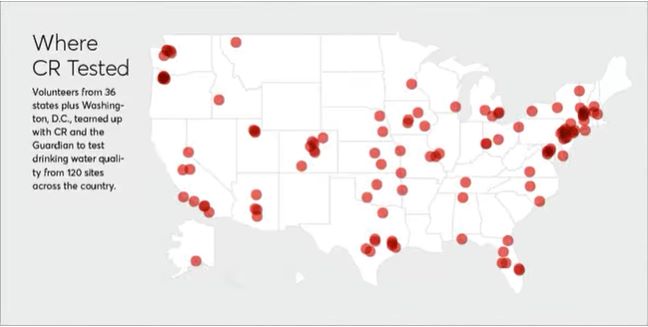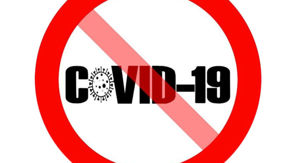3 mins read//
Per- and polyfluoroalkyl substances (PFAs) are chemicals found in everyday goods, including non-stick frying pans, stain-resistant carpets and clothes, and food packaging. They’re so ubiquitous that they easily leak into our food and water systems, and into our bodies, where they stay for good—hence their ominous nickname, “forever chemicals.” It’s estimated that 97% of Americans have PFAs in their bloodstreams.
PFAs in our tap water was the focus of a joint investigation by Consumer Reports and The Guardian. The two media outlets launched a nine-month investigation, “America’s Water Crisis,” that detected not just traces but large quantities of PFAs, lead, and arsenic in the majority of municipal drinking water systems across the U.S; it’s the winner of the water category of Fast Company’s 2022 World Changing Ideas Awards. “It’s an incredible project on a life-and-death issue,” says Jen Shecter, senior director of content impact at Consumer Reports. “I think it cuts at the core of one of the most fundamental rights that consumers have: the access to safe drinking water.”
Consumer Reports, the consumer advocacy organization and nonprofit newsroom, recruited 120 volunteers across the EPA’s ten U.S. regions to collect tap water. “It was a little bit like Willy Wonka’s golden ticket,” Shecter says. “Every person was carefully curated to get a representative sample.” Trained on testing via webinars, the recruits sent their samples to external labs for analysis. For Consumer Reports, which regularly trials and reviews products for the benefit of consumers, this level of testing was unprecedented. “In Yonkers, we’re testing the appliances, we’re testing the vacuum cleaners,” Shecter says. “This type of equipment is highly, highly specialized.”

Because Consumer Reports is a different kind of media organization, with roots in consumer research and public education, Consumer Reports was able to involve reporters, food policy experts, safety researchers, and others. “Nowhere else is like this, where you have PhD microbiologists and PhD statisticians,” Shecter says. To gain a wider reach, it partnered with The Guardian, whose reporters were also covering important water issues. The report reached an audience of a million.
The organizations also wanted to give readers solutions for avoiding pollutants, so they tested affordable consumer items like My Tap Score, a mail-in water test that can check water at home, and pitchers that claim to help remove lead. Other items, like reverse-osmosis systems that remove PFAs, are more expensive.
The chief goal was legislative change, which “has been part of the Consumer Reports playbook from the beginning,” says Marta Tellado, the organization’s CEO. The Environmental Protection Agency didn’t even previously categorize PFAs as harmful, and set no enforceable limits. But thanks to the report and its concrete data, in October 2021, the EPA released its three-year roadmap for dealing with PFAs, including holding polluters accountable, making science-based decisions on understanding and removing the chemicals, and prioritizing the protection of the most disadvantaged communities.
“Everyone, no matter where they live, should be able to trust the water that comes out of their tap,” Tellado says. “And every community has the right to clean water.”











